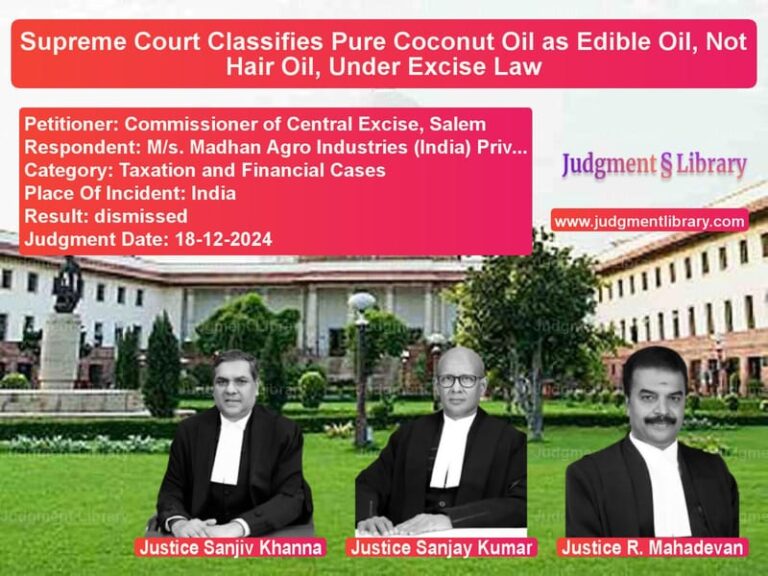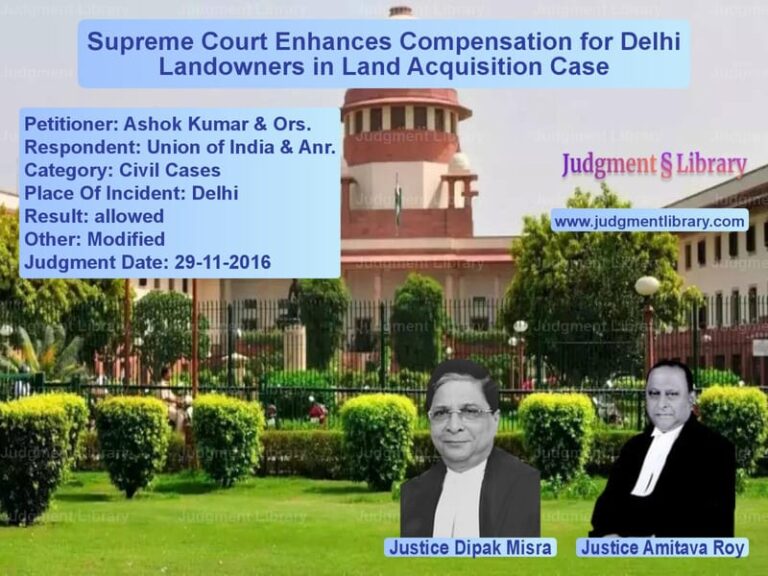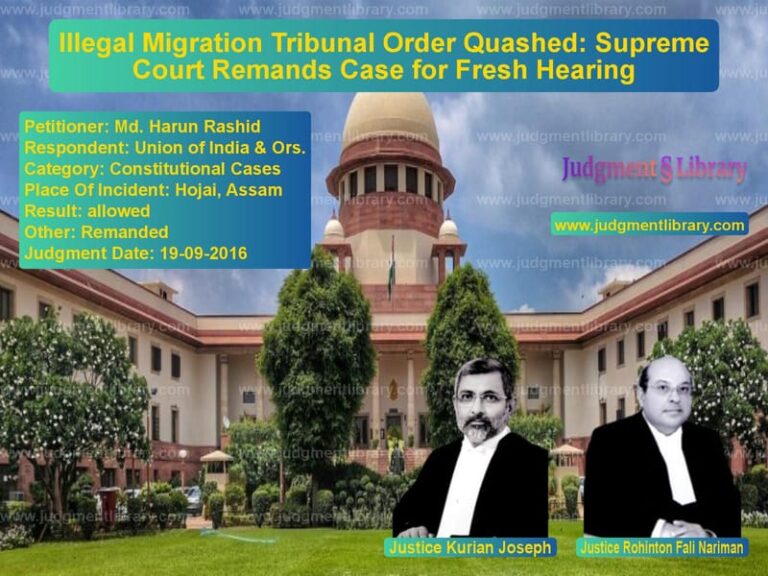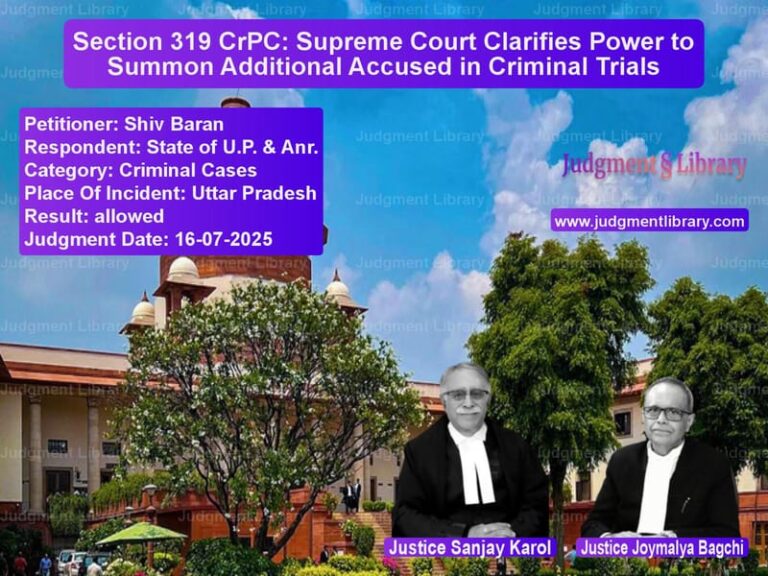Judicial Promotions Redefined: Supreme Court’s Landmark Verdict on LDCE Eligibility
The Supreme Court of India, in a significant ruling, addressed the crucial issue of judicial promotions and eligibility for the Limited Departmental Competitive Examination (LDCE). This judgment, arising from the long-pending writ petition filed by the All India Judges Association, has far-reaching implications for the career progression of judicial officers. It specifically deals with the promotion of Civil Judges to the Delhi Higher Judicial Service (DHJS) and the challenges posed by the existing criteria.
The petitioners in this case, Ms. Sheetal Chaudhary Pradhan and Dr. Shirish Aggarwal, both judicial officers in the Delhi Judicial Service (DJS), sought modification of the Supreme Court’s previous orders that set stringent eligibility requirements for LDCE. They contended that the existing system created hurdles for meritorious officers seeking timely promotion. The Delhi High Court also supported the need for modifications, highlighting systemic inefficiencies in filling LDCE quota vacancies.
Background of the Case
The Supreme Court had previously laid down a structured promotion mechanism through its orders dated March 21, 2002, and April 20, 2010. These orders prescribed that a judicial officer must complete 10 years of qualifying service, including five years as a Civil Judge (Senior Division), to be eligible for LDCE and thereby advance to DHJS. However, the petitioners argued that this requirement was impractical, particularly in Delhi, where the distinction between Civil Judges (Junior Division) and (Senior Division) was minimal.
Key Issues Raised in the Petition
- Whether the existing promotion structure hindered efficient career progression.
- The lack of available candidates under the LDCE quota, leading to persistent vacancies.
- The unique judicial service structure in Delhi, where Civil Judges (Junior Division) and (Senior Division) performed similar functions, with the only major distinction being pay scales.
- The need to create a merit-based, fair, and efficient system that allows promising officers to rise in ranks without unnecessary delays.
Arguments of the Petitioners
The petitioners, represented by Senior Counsel Shri P.S. Patwalia, argued that the current promotion scheme failed to recognize the realities of judicial work distribution in Delhi. They pointed out that:
- The existing system created an artificial delay in promotions, barring capable officers from progressing on merit.
- Many meritorious officers were forced to wait unnecessarily due to a rigid qualification structure.
- The five-year Senior Division requirement was unfair in Delhi, as there was no substantial difference in work responsibilities between Junior and Senior Division judges.
- Reducing the eligibility period would incentivize better performance and create a fairer, more competitive judicial system.
Counterarguments by the Respondents
The High Court of Delhi, represented by Senior Counsel Shri A.D.N. Rao, largely supported the petitioners’ stance. The High Court acknowledged that the existing 10-year requirement was impractical, especially considering the prevailing judicial work conditions in Delhi. The amicus curiae, Shri Siddharth Bhatnagar, also echoed the need for change, recognizing the need for a structured yet flexible mechanism that rewards merit.
Observations of the Supreme Court
The Supreme Court examined the historical context of judicial promotions and the rationale behind the previous framework. In its deliberations, the Court noted:
“There should also be an incentive amongst the relatively junior and other officers to improve and to compete with each other so as to excel and get quicker promotion. In this way, the calibre of the members of the Higher Judicial Service will further improve.”
The Court acknowledged that the purpose of introducing LDCE was to create an opportunity for meritorious officers to advance in their careers more rapidly. However, the existing framework, especially in Delhi, was counterproductive to this objective. The Court emphasized that unfilled vacancies under the LDCE quota harmed the judicial system, leading to inefficiencies.
Final Judgment and Modifications
After thorough deliberation, the Supreme Court ruled in favor of modifying the earlier orders to align with the practical realities faced by judicial officers. The key rulings included:
- The eligibility criteria for LDCE would now require either 7 years of total judicial service (5 years as a Civil Judge (Junior Division) and 2 years as a Civil Judge (Senior Division)) or 10 years of service solely as a Civil Judge (Junior Division).
- This modification applies exclusively to the Delhi Higher Judicial Service (DHJS).
- The High Court of Delhi was directed to amend the necessary rules to reflect these changes.
The Court concluded that these modifications were necessary to fulfill the original intent of the LDCE—providing a faster promotion pathway for meritorious officers. The revised criteria ensure that deserving candidates are not kept waiting due to an arbitrary timeline, thereby strengthening the overall judicial structure.
Impact of the Judgment
This Supreme Court ruling is expected to have several significant consequences:
- Increased Efficiency in Judicial Promotions: By reducing the qualification period, the judgment allows skilled officers to rise in ranks without unnecessary bureaucratic delays.
- Encouraging Merit-Based Growth: The decision reinforces the importance of merit over mere seniority, aligning judicial promotions with performance.
- Addressing Vacancies in Higher Judicial Services: With more officers qualifying for LDCE, long-standing unfilled vacancies in the DHJS can now be addressed more effectively.
- Streamlining Future Policy Decisions: The ruling sets a precedent for future reforms in judicial service regulations, promoting a fair and transparent selection process.
By ensuring that judicial promotions align with merit and efficiency, this verdict strengthens the judiciary’s commitment to justice and accountability.
Petitioner Name: All India Judges Association and Others.Respondent Name: Union of India and Others.Judgment By: Justice B.R. Gavai, Justice L. Nageswara Rao, Justice Aniruddha Bose.Place Of Incident: Delhi.Judgment Date: 19-04-2022.
Don’t miss out on the full details! Download the complete judgment in PDF format below and gain valuable insights instantly!
Download Judgment: all-india-judges-ass-vs-union-of-india-and-o-supreme-court-of-india-judgment-dated-19-04-2022.pdf
Directly Download Judgment: Directly download this Judgment
See all petitions in Promotion Cases
See all petitions in Recruitment Policies
See all petitions in Public Sector Employees
See all petitions in Judgment by B R Gavai
See all petitions in Judgment by L. Nageswara Rao
See all petitions in Judgment by Aniruddha Bose
See all petitions in allowed
See all petitions in Modified
See all petitions in supreme court of India judgments April 2022
See all petitions in 2022 judgments
See all posts in Service Matters Category
See all allowed petitions in Service Matters Category
See all Dismissed petitions in Service Matters Category
See all partially allowed petitions in Service Matters Category







